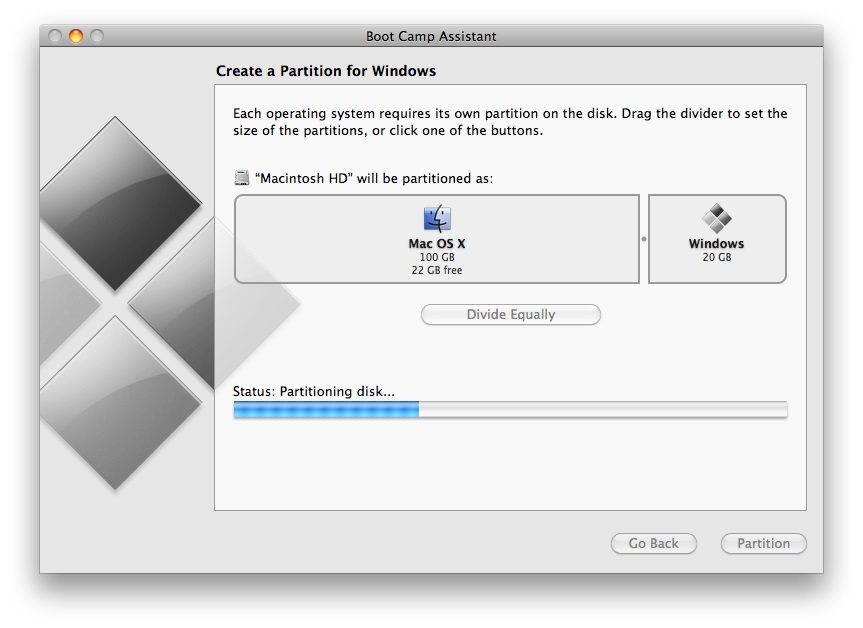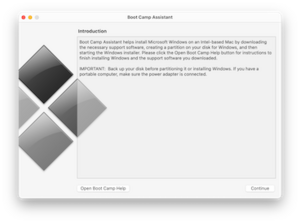Disk Utility Mac Partition Boot Camp
The process involves creating an image of the partition for safe keeping, deleting the original Boot Camp partition with Disk Utility, creating a new, more expansive partition; and then moving the. May 22, 2019 And I've tested creating a FAT partition in the disk utility and that worked. Also tried erasing the entire drive and re-installing Mojave. I've managed to solve it by creating an additional APFS partition in disk utility and then run BCA and create another boot camp partition on that partition. APFS Volume Mac HD 17.8 GB disk2s1.
Sims 3 custom bartender uniform not showing up mac and cheese. Only the females get the regular cap while the Chef hat comes in both female and male.Make sure you getOne last thing, the Hat folder is inside the.rar and uses the.7z file format so you will need a newer version of to extract it. Hats in all hair colors.
Disk Utility User Guide
Disk Utility can fix certain disk problems—for example, multiple apps quit unexpectedly, a file is corrupted, an external device doesn’t work properly, or your computer won’t start up. Disk Utility can’t detect or repair all problems that a disk may have. Auto tune pro turrent.
If you run First Aid on a disk, Disk Utility checks the partition maps on the disk and performs some additional checks, and then checks each volume. If you run First Aid on a volume, Disk Utility verifies all the contents of that volume only.
In the Disk Utility app on your Mac, choose View > Show All Devices.
Note: If you’re checking your startup disk or startup volume, restart your computer in macOS Recovery, select Disk Utility in the macOS Utilities window, then click Continue. If you check your startup volume (Macintosh HD), make sure you also check your data volume (Macintosh HD - Data).
In the sidebar, select a disk or volume, then click the First Aid button .
If Disk Utility tells you the disk is about to fail, back up your data and replace the disk—you can’t repair it. Otherwise, continue to the next step.
Click Run, then click Continue.
If Disk Utility reports that the disk appears to be OK or has been repaired, you’re done. You can click Show Details to see more information about the repairs. Otherwise, you may need to do one of the following.
If Disk Utility reports “overlapped extent allocation” errors, two or more files occupy the same space on your disk, and at least one of them is likely to be corrupted. You need to check each file in the list of affected files. Most of the files in the list have aliases in a DamagedFiles folder at the top level of your disk.
If you can replace a file or re-create it, delete it.
If it contains information you need, open it and examine its data to make sure it hasn’t been corrupted.
If Disk Utility can’t repair your disk, or you receive a report that the First Aid process failed, try to repair the disk or partition again. If that doesn’t work, back up as much of your data as possible, reformat the disk, reinstall macOS, then restore your backed-up data.

If your Mac has a Fusion Drive and you see a flashing question mark or alert, see the troubleshooting section of the Apple Support article About Fusion Drive, a storage option for some Mac computers.
If you continue to have problems with your disk or it can’t be repaired, it may be physically damaged and need to be replaced. For information about servicing your Mac, see Find out how to service or repair your Mac.
When attempting to create a Windows partition, Boot Camp Assistant might show the alert ”Your disk could not be partitioned. An error occurred while partitioning the disk. Please run First Aid from within Disk Utility to check and fix the error.”
Use Disk Utility to check for errors
- Install the latest macOS updates.
- Use Disk Utility to repair your startup disk.
- If Disk Utility found no errors or repaired all errors, try again to use Boot Camp Assistant to install Windows.
- If Boot Camp Assistant still gives the partitioning error, continue to the steps below.
Check for unallocated free space
- Open Disk Utility, which is in the Utilities folder of your Applications folder.
- In the Disk Utility sidebar, select the name of your internal disk, container, or volume, such as Macintosh HD.
- Click Partition in the toolbar.
- If you see a message about Apple File System space sharing, click Partition to confirm that you want to partition instead of add a volume.
- If the pie chart shows a section labeled ”Free space,” click to select it. ”Free space” should now also appear in the Partition Information shown on the right.
- After selecting the ”Free space” section of the chart, click the remove (–) button beneath the chart. Removing this unallocated free space makes that space available for your use again. Then click Apply and quit Disk Utility.
- Try again to use Boot Camp Assistant to install Windows.
- If Boot Camp Assistant still gives the same partitioning error, continue to the steps below.

Turn off Time Machine temporarily
If you use Time Machine with macOS Mojave or High Sierra, either upgrade to macOS Catalina 10.5 or later, or follow these steps:
- Open Time Machine preferences from the Time Machine menu in the menu bar. Or choose Apple menu > System Preferences, then click Time Machine.
- Deselect ”Back Up Automatically” to turn off Time Machine.
- Wait a few minutes, then try again to use Boot Camp Assistant to install Windows.
- After installation is complete, you can turn on Time Machine again.
Learn more
Disk Utility Mac Partition Boot Camp Download
Learn what to do if Boot Camp Assistant stops responding or says that Boot Camp installation failed.